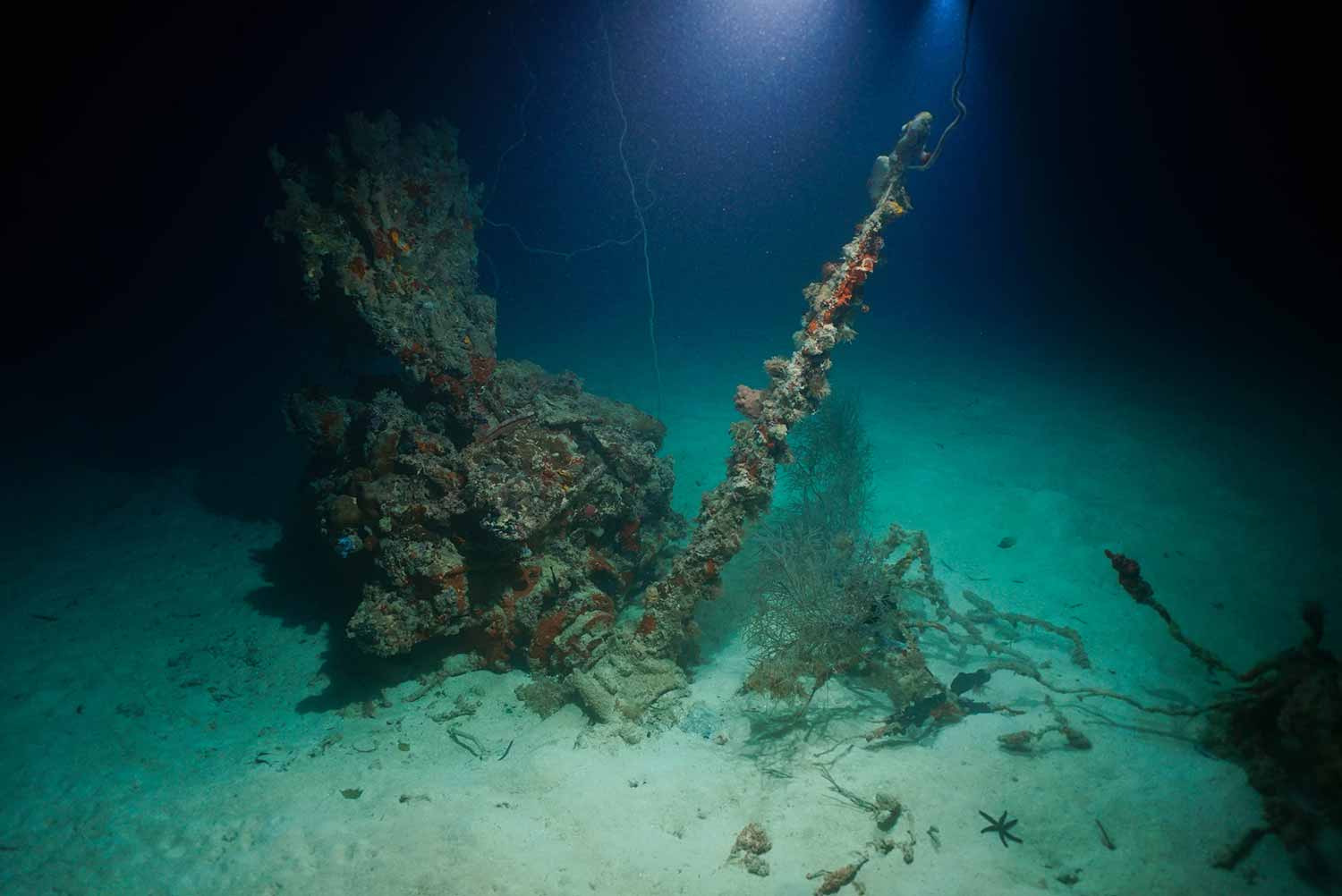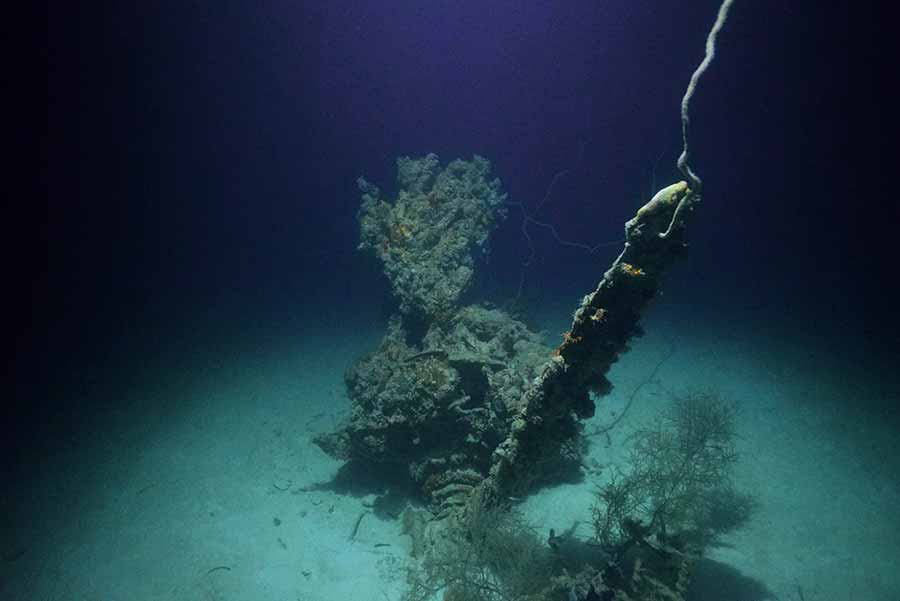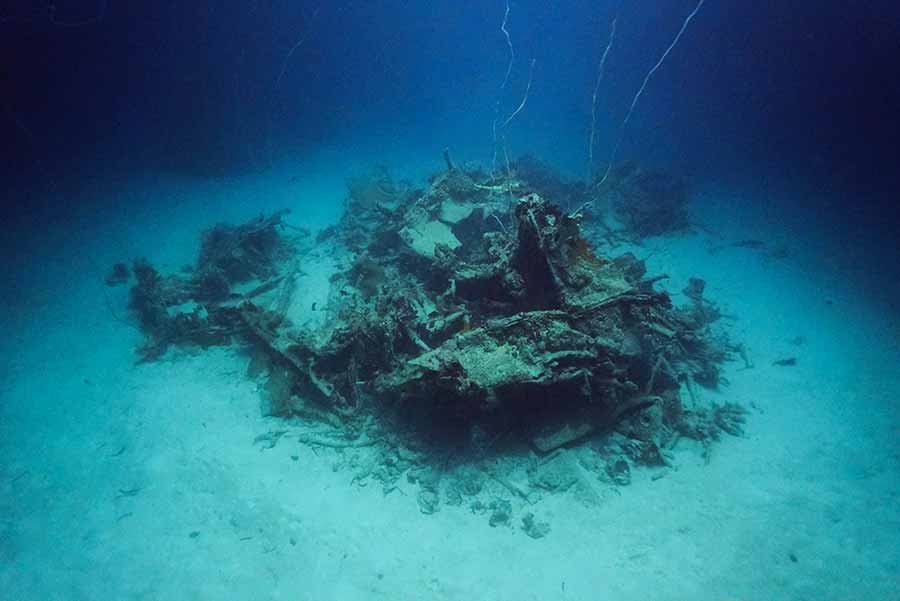
Downed World War II Aircraft Missing for 72 Years Located in Pacific Islands by Project RECOVER
Financial commitment to Project RECOVER by Air Force Heritage Flight Foundation founder and chairman Dan Friedkin enables ongoing search and discovery of Missing in Action
By:
- Robert Monroe
Media Contact:
- Robert Monroe - scrippsnews@ucsd.edu
- Mario Aguilera - maguilera@ucsd.edu
Published Date
By:
- Robert Monroe
Share This:
Article Content

Wreckage of a U.S. Navy TBM-1C Avenger located by Project RECOVER off Palau. Photos by Eric Terrill, Mark Moline
An American aircraft, a TBM-1C Avenger, missing since July 1944 was recently located in the waters surrounding the Pacific Island nation of Palau by Project RECOVER—a collaborative effort to combine the most advanced oceanographic technology with advanced archival research methods to locate aircraft and associated Americans missing in action (MIA) since World War II.
Scattered among the lagoon waters and coral reefs surrounding Palau’s island chain, and concealed within its dense mangrove forests, are several dozen U.S. aircraft and the remains of as many as 80 U.S. airmen. This US Navy TBM-1C adds to the growing list of wrecks discovered by Project RECOVER.

“The importance of our mission is reinforced with each new discovery of a missing aircraft," said Eric Terrill, an oceanographer from Scripps Institution of Oceanography at the University of California San Diego, one of Project RECOVER's three founding entities. “But this is more than reconnecting with history; it's about locating the missing to enable the U.S. government to bring them home for a proper burial. With potential recovery sites around the world, Project RECOVER and its team of researchers and volunteers are expanding to intensify its searches using modern science and technology.”
The most recent find was made possible by a substantial financial commitment from Dan Friedkin, founder and chairman of Air Force Heritage Flight Foundation and chairman of Gulf States Toyota and The Friedkin Group. As a member of the Project RECOVER team, Friedkin’s continued support is helping sustain ongoing missions, while enabling the organization to innovate its technology and expand its search and discovery efforts to focus areas around the world.

“This recovery is another step closer towards Project RECOVER’s goal of finding the final underwater resting places of all Americans missing in action since World War II,” said Friedkin, one of nine civilian Heritage Flight pilots qualified to fly in formation with U.S. Air Force single-ship demonstration teams. “As someone who gained a passion for flying and admiration for our country’s brave service members as a child, I will continue to support the efforts of Project RECOVER and their partner organizations. Every family member impacted by the loss of a service member deserves this type of closure.”
Upon locating this TBM-1C Avenger and other U.S. aircraft, Project RECOVER provides detailed information about discovered wrecks and possible links to airmen listed as missing in action to the Department of Defense’s Defense POW/MIA Accounting Agency (DPAA). DPAA is tasked with recovery and repatriation efforts, including notification of the families of these MIAs.
Financial gifts to this cause are shared among Project RECOVER’s three founding entities—the University of Delaware, Scripps Oceanography, and the BentProp Project (a non-profit organization). Funds are being used in development of technology, data processing, and analysis, and field efforts that lead to discoveries of World War II wreckage and their associated MIAs. All three member organizations recently signed memorandums of understanding with DPAA to formalize their public-private partnership with the U.S. Government for conducting MIA related searches.
Share This:
You May Also Like
Stay in the Know
Keep up with all the latest from UC San Diego. Subscribe to the newsletter today.


